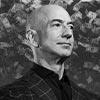Health Insurance Premiums Cross ₹1 Lakh Crore Mark

News Synopsis
Health insurance premiums in India have surpassed the ₹1 lakh crore mark in the first ten months of the current financial year, reflecting a 10% increase from ₹90,785 crore during the same period last year. This growth underscores the rising demand for health insurance coverage; however, the rate of increase has slowed compared to the previous fiscal year, which saw a significant 20% rise.
For FY24, total health insurance premiums reached ₹1.07 lakh crore, with projections indicating continued growth in FY25. The expansion is driven by increasing healthcare costs, higher medical inflation, and growing awareness about health insurance.
Individual vs. Group Health Insurance: Market Trends
The individual health insurance segment has demonstrated the most rapid growth, increasing by 13.5% to ₹37,068 crore. This segment now constitutes 38% of the overall market, indicating a rising preference for personal health coverage.
Meanwhile, group health insurance, primarily purchased by employers for their workforce, continues to dominate with a 53% market share. Premiums in this category increased by 12.4%, reaching ₹47,312 crore. Group health insurance is an attractive option for employers, offering financial protection and medical benefits to employees while ensuring tax benefits.
However, government-backed health insurance schemes, including Ayushman Bharat Yojana, witnessed a decline. Premiums under these schemes dropped by 9.7% to ₹8,828 crore. In this model, state governments either purchase insurance or create trust-based systems to manage claims. While all three segments—individual, group, and government health insurance—saw double-digit growth in FY24, the overall premium growth rate has slowed to 10.4% this year.
Rising Premium Costs and Affordability Concerns
Despite the upward trend in premiums, affordability has emerged as a major concern. While health insurance premiums surged by 20% last year, the number of individuals covered under personal health policies increased by only 5%, closely aligning with workforce expansion. This slow adoption rate suggests that rising costs may be limiting access to insurance.
The 18% Goods and Services Tax (GST) on health insurance premiums is another financial burden on policyholders. Discussions are ongoing regarding a potential waiver of this tax to make health insurance more affordable. Insurers are also recommending higher sum assured amounts due to escalating medical expenses. A decade ago, a standard health policy typically offered ₹3 lakh coverage, whereas most insurers now advise a minimum of ₹5 lakh to ensure adequate protection against inflation-driven healthcare costs.
Key Market Dynamics Driving the Surge
The increase in health insurance premiums is influenced by multiple factors, including higher claims ratios in group policies and expanded coverage offerings. Many policies now cover maternity expenses and previously excluded treatments, reflecting regulatory changes that mandate comprehensive benefits for policyholders.
According to Star Health and Allied Insurance, a leading provider of individual health policies in India, the renewal ratio for retail health policies declined from 98.2% in December 2023 to 94% in December 2024. This trend suggests that higher premiums may be impacting policy renewals.
Additionally, the overall sum insured in retail health policies has increased by 10%, indicating a shift towards higher coverage amounts. Insurers are focusing on improving customer retention by offering value-added services such as wellness benefits, no-claim bonuses, and cashless hospitalization.
Market Leaders and Competitive Landscape
India’s health insurance sector remains competitive, with both public and private insurers vying for market share. New India Assurance leads the industry with a 17% share of total health insurance premiums, followed by Star Health at 13% and Bajaj Allianz at 7%.
Standalone health insurers collectively account for nearly 30% of total premiums, emphasizing their growing presence in the sector. These specialized insurers are increasingly focusing on retail health policies, offering innovative plans tailored to diverse consumer needs.
Future Outlook of Health Insurance in India
With rising healthcare costs, growing consumer awareness, and regulatory support, the health insurance sector is expected to witness sustained growth in the coming years. However, balancing premium affordability with adequate coverage remains a challenge.
Key industry trends to watch include the expansion of digital health insurance platforms, the introduction of AI-driven claim processing, and potential policy changes to reduce GST on health insurance. These factors will shape the future landscape of India’s health insurance market, ensuring wider accessibility and improved financial protection for policyholders.
You May Like









